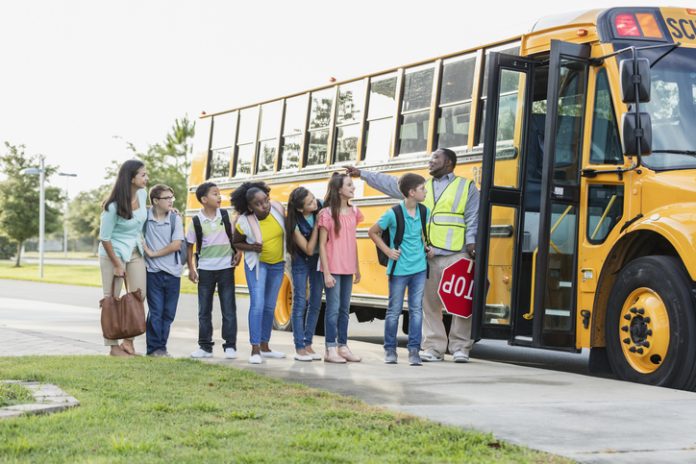Diversity, equity, and inclusion (DEI) are essential values that should inform every choice we make, including (or especially) in student transportation operations. DEI in student transportation means that all students, regardless of their background, feel valued and respected when transported to and from school.
Here are six elements to consider in your day-to-day operations, but spoiler alert – you’re likely already accomplishing some of these best practices!
Diverse Representation
Representation in the workplace is important for creating a diverse and inclusive environment and community, improving decision-making and problem-solving, reducing bias, and creating opportunities for underrepresented groups.
Consider implementing policies that can help engage, celebrate, and retain diverse team members within the transportation department. By prioritizing diversity, challenges such as economic or language barriers faced by your staff and the students you serve may become more apparent. Identifying these challenges will only help leaders to find solutions that best suit the students. You can ensure success when implementing changes by tracking demographic data and regularly assessing progression toward a more diverse team.
Hiring Practices
Creating a diverse workplace starts with awareness in hiring practices. Work with your recruiting or HR team to expand where you find candidates for all positions. Talk with your staff to find out where they would look for jobs in the industry. When writing the job descriptions, use inclusive language – avoiding gendered words and assumptions about physical capabilities unless explicitly necessary.
Other approaches to keep in mind include establishing diversity goals throughout the hiring process and prioritizing diversity and inclusion in decision-making. This can look like not requiring a date of birth on an application or reviewing resumes without names. By ensuring that hiring managers and interviewers are trained on the importance of diverse and inclusive hiring practices, you’re more likely to build the kind of team that will best support your student population with their range of perspectives and backgrounds.
Language Accessibility
Language accessibility is vital, not just within your workforce, but between your team and the students and larger community. Keeping language accessibility top of mind ensures that all students and their families can understand and participate in the school transportation system. Students and families who speak languages other than English, or may be Deaf or hard of hearing, may face language barriers that can make it challenging to comprehend transportation policies or communicate with transportation staff.
When schools offer translation services and language assistance, it can help the community feel more involved and included. Additionally, consider adding closed captioning to any videos, and be aware of potential vision impairments when creating or distributing printed or digital material. Try sharing information in multiple different ways to offer everyone a chance to learn in their own way.
Students and families who feel empowered to communicate comfortably are more likely to share information and feedback, which can reduce transportation-related issues and increase overall satisfaction with the transportation system.
Community Engagement
With a diverse team and accessible language practices in place, a focus on community engagement practices is the next way to bolster your efforts. Start by identifying organizations in your community that promote diversity, equity, and inclusion and build relationships with them. One example is the Northern Illinois Special Recreation Association (NISRA), who has helped with empathy training so drivers could better understand the experiences of some students.
Use these relationships to potentially find employees for open positions or to help share information with your community on a larger scale. With connections like these in place, it could create a new channel to conduct surveys or gather feedback from the community — information that could help influence transportation operation decisions.
Equitable Access
Equality and equity are two terms that are too often used interchangeably. Understanding the difference between treating everyone the same, regardless of their individual needs or circumstances (equality) and treating people fairly by considering their needs (equity) is another key element to ensure the success of any DEI initiative you may take on.
Within a transportation department, equitable access can look like an analysis of existing transportation routes:
- Do they provide fair access to students in under-served areas?
- Are the stops in the safest, most accessible location for the neighborhood?
- Has extra time been given in all the places where it may be needed to allow for comfortable onboarding or offloading?
- Are all off-site events such as activity trips open to participation from all eligible students?
- Is there an opportunity for parents and students to evaluate and provide feedback?
This may be a good place to involve community organizations and parents to ensure all voices are heard.
Safe Reporting Mechanisms
Finally, consider how you manage incident reporting, first by establishing safe and confidential mechanisms for staff and students to report occurrences such as discrimination, harassment, or bullying. What is done with this information is equally important, because when students know that procedures are in place to help school staff take appropriate action, they’re more likely to participate in the reporting process. As established earlier, tracking and understanding the data within these reports is important to understand the effectiveness of the reporting.
DEI in student transportation is essential for creating a safe and inclusive transportation system that values and respects all students and the community you serve. By promoting DEI in your district or organization’s transportation department, schools can:
- Create an environment where all students feel safe and comfortable
- Reduce classroom absenteeism
- Promote positive social interaction between students from different backgrounds
- Reduce transportation-related costs
- Find more ways to be inclusive with the community
- Promote a sense of community among students
- And provide the highest level of safety and service for all
As we strive for a more inclusive and accepting society, DEI in student transportation will play a critical role in shaping the future.
For more information about Kim Martin or Tyler Technologies, visit tylertech.com/stn.
















